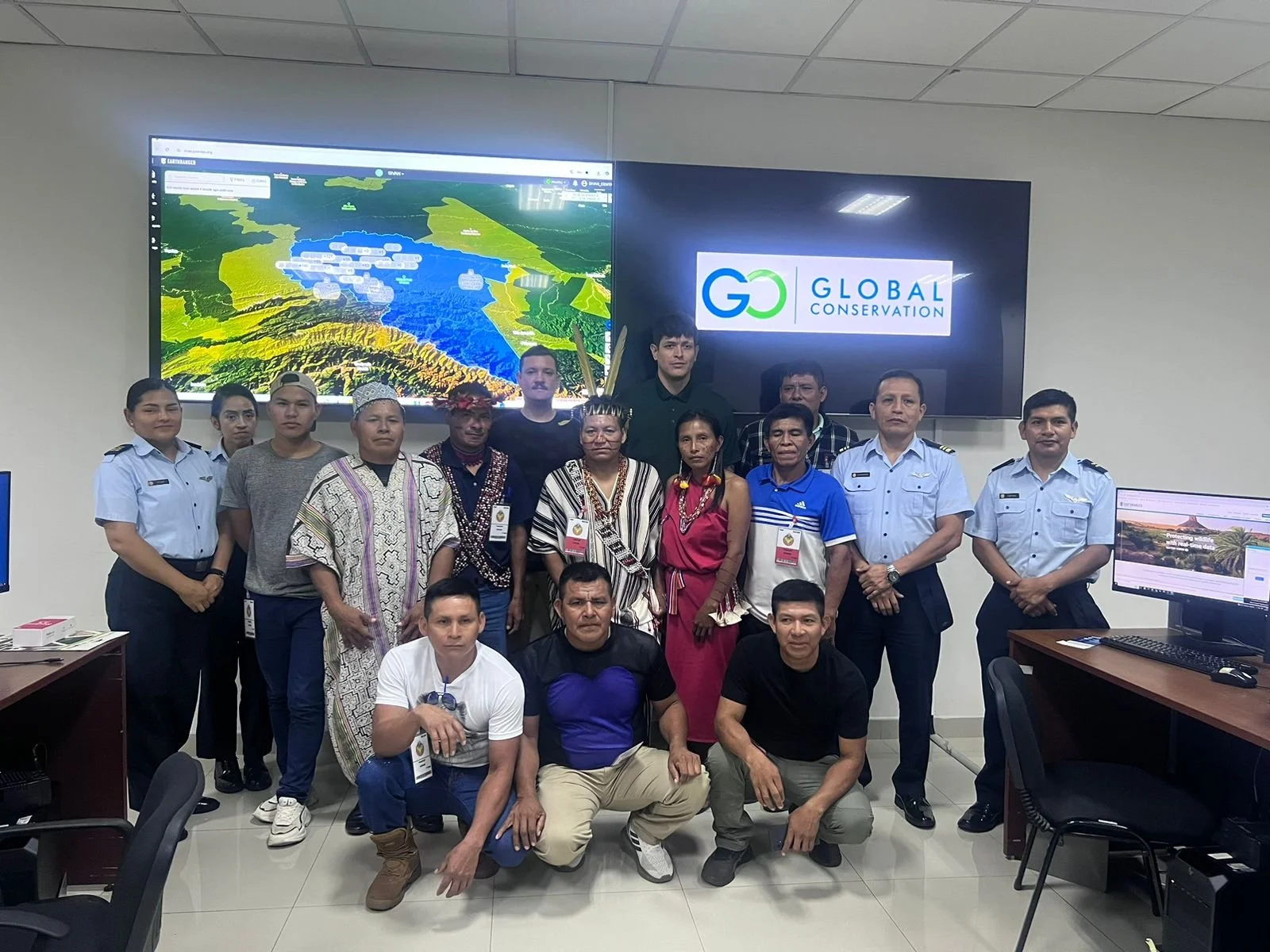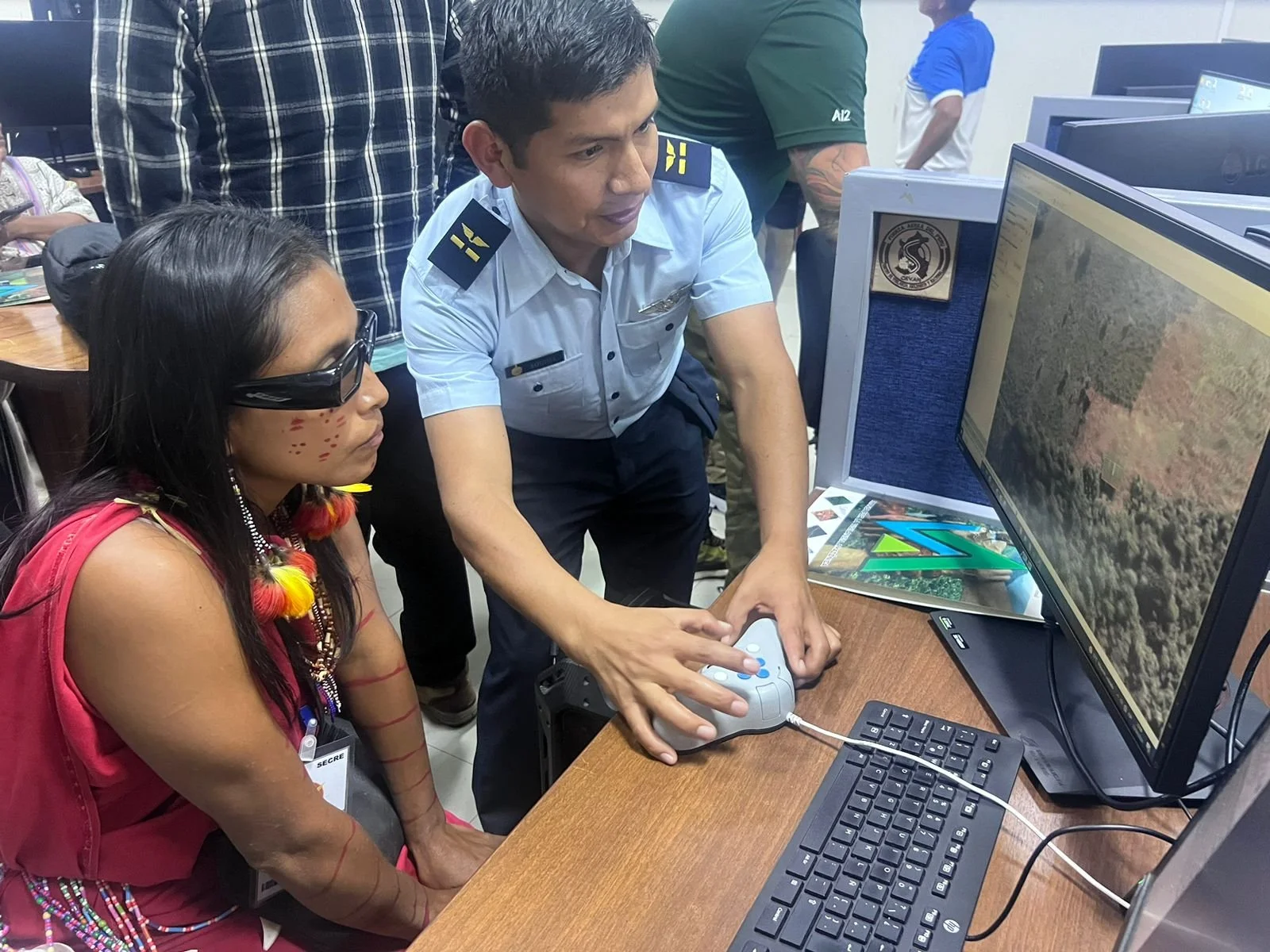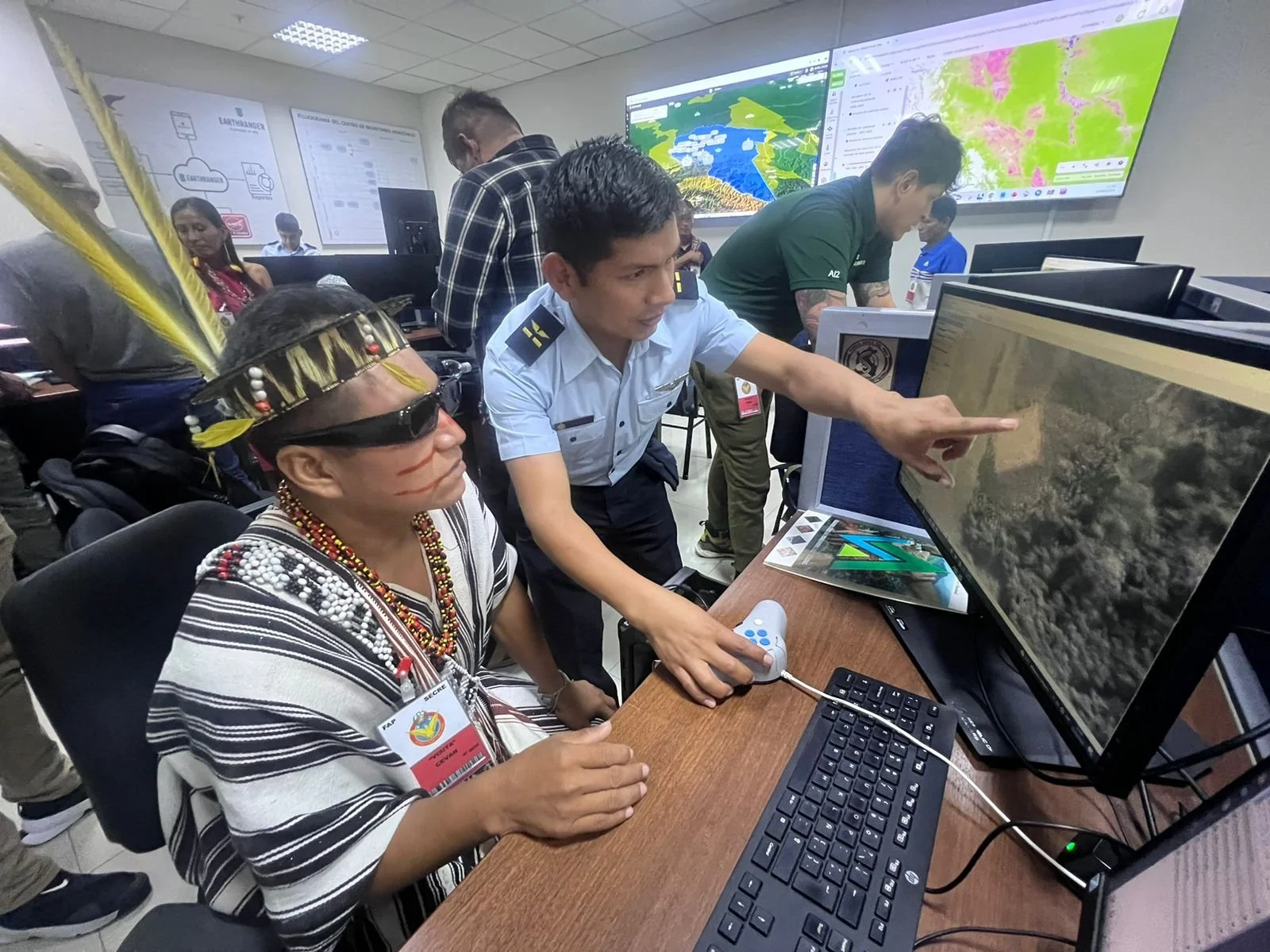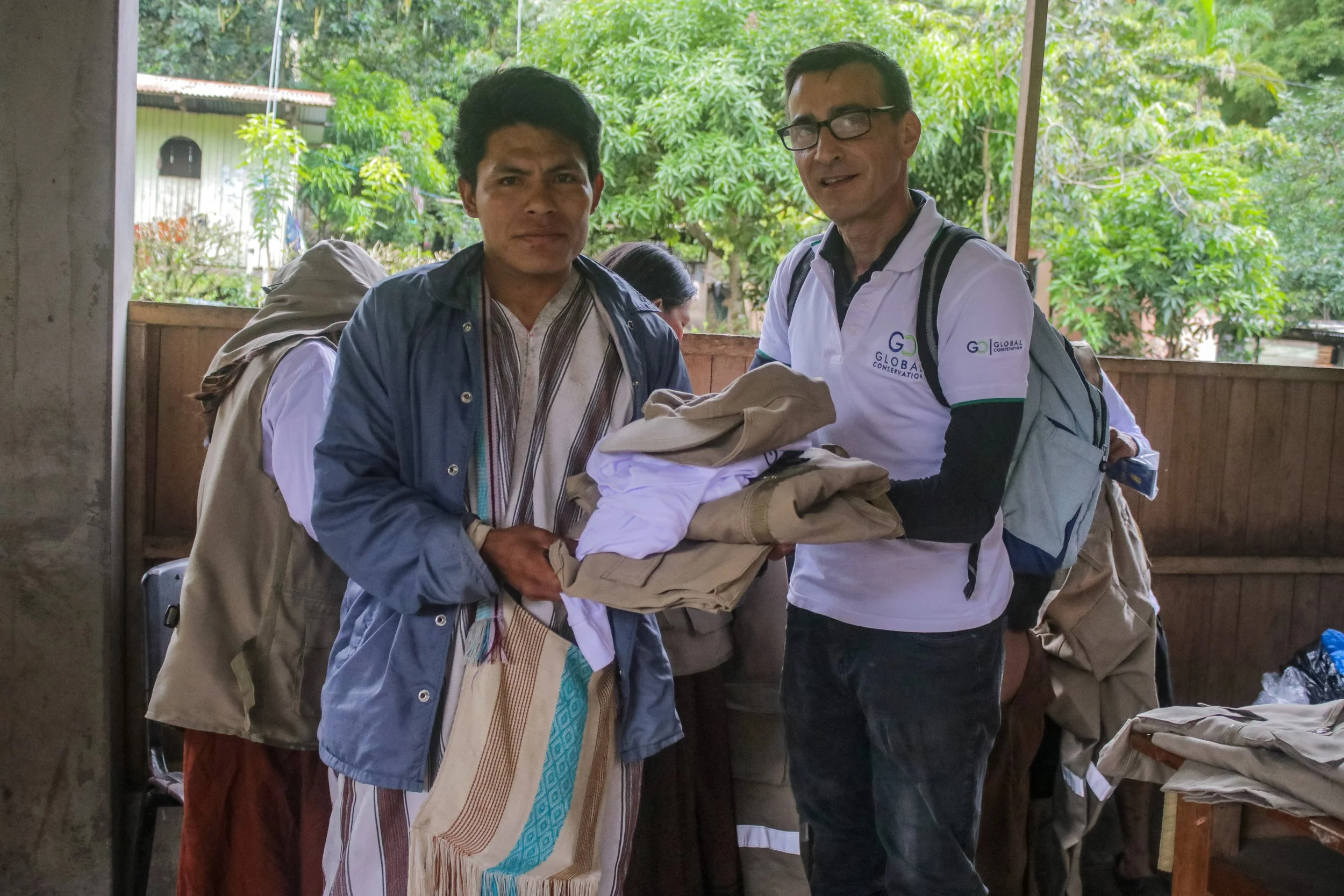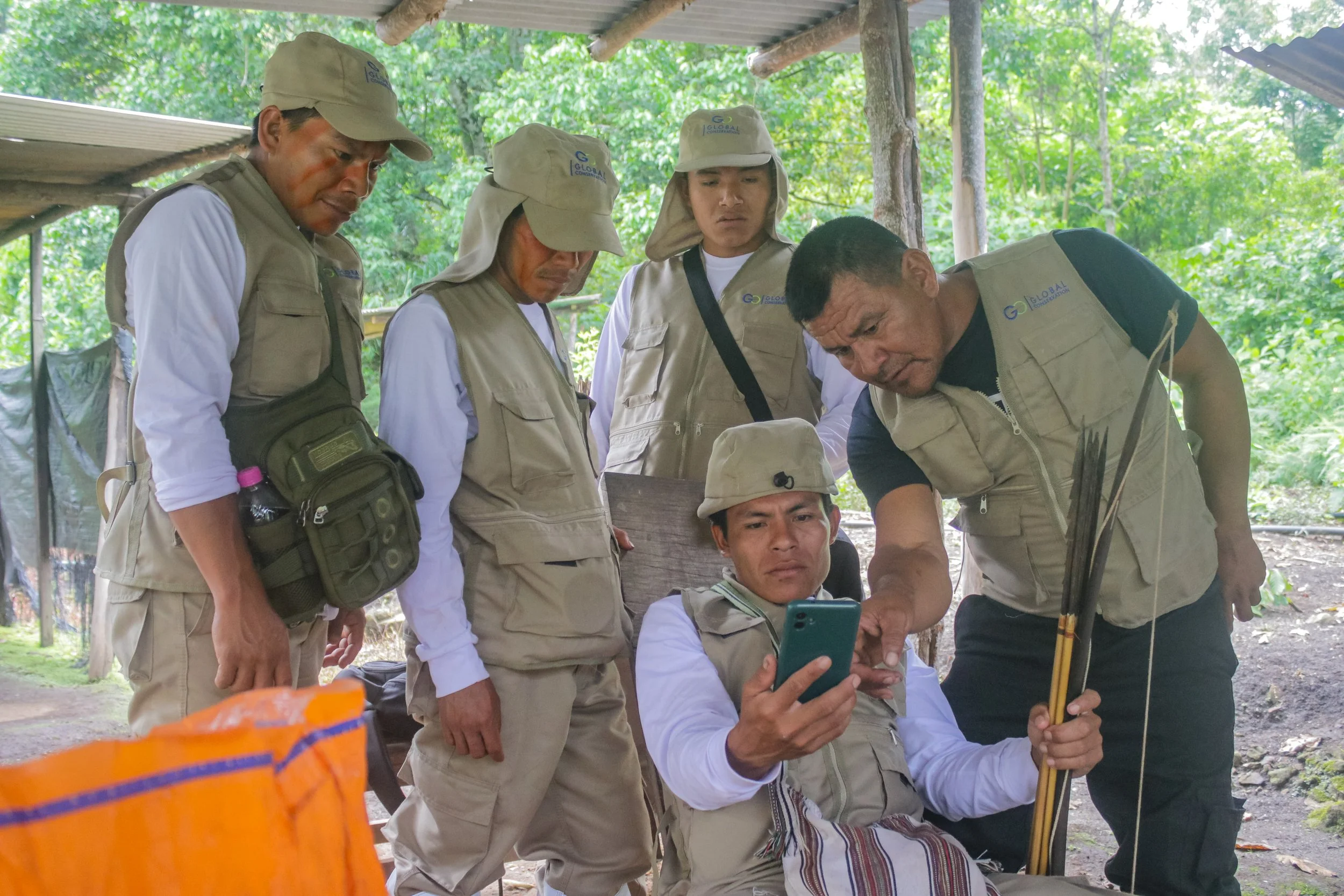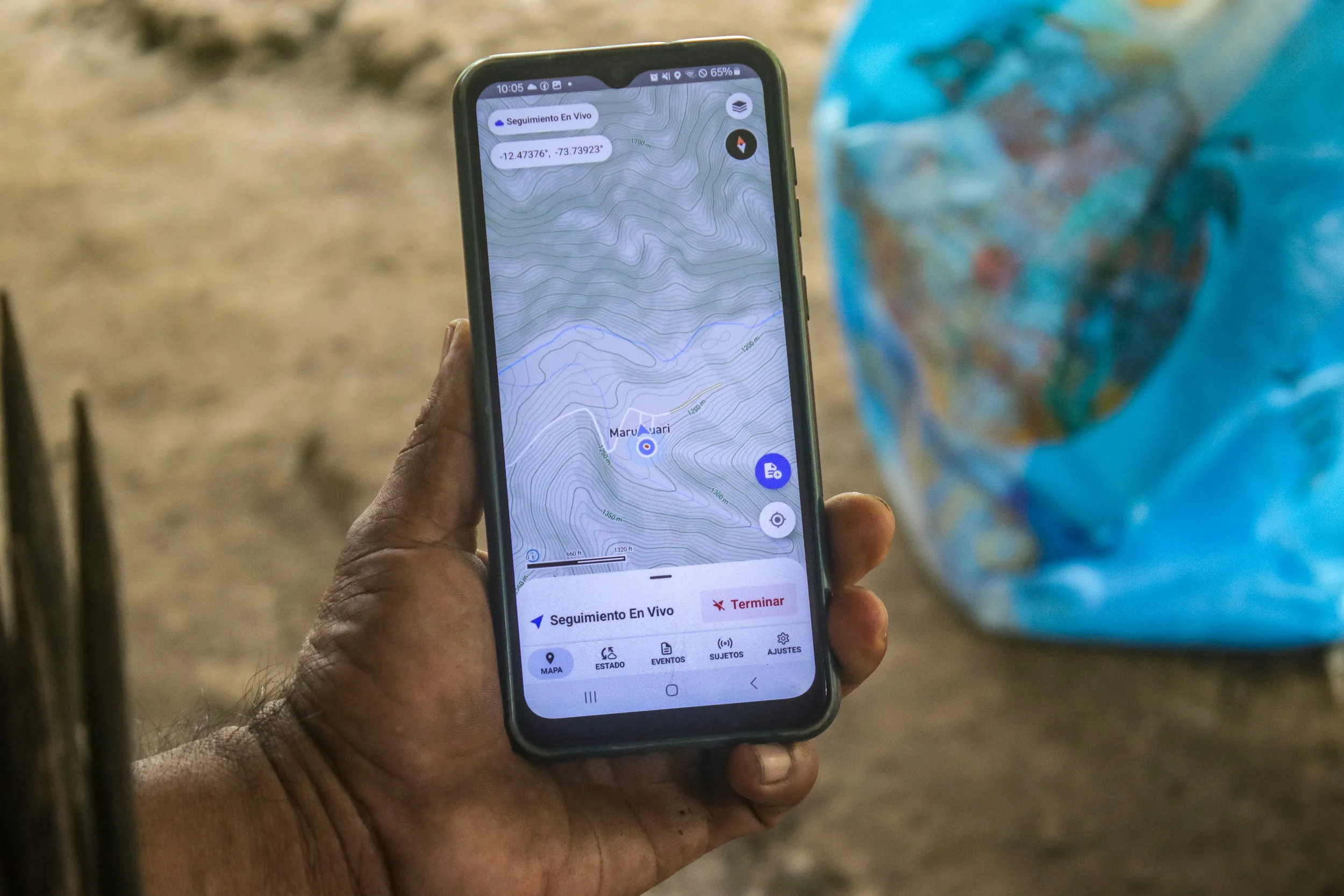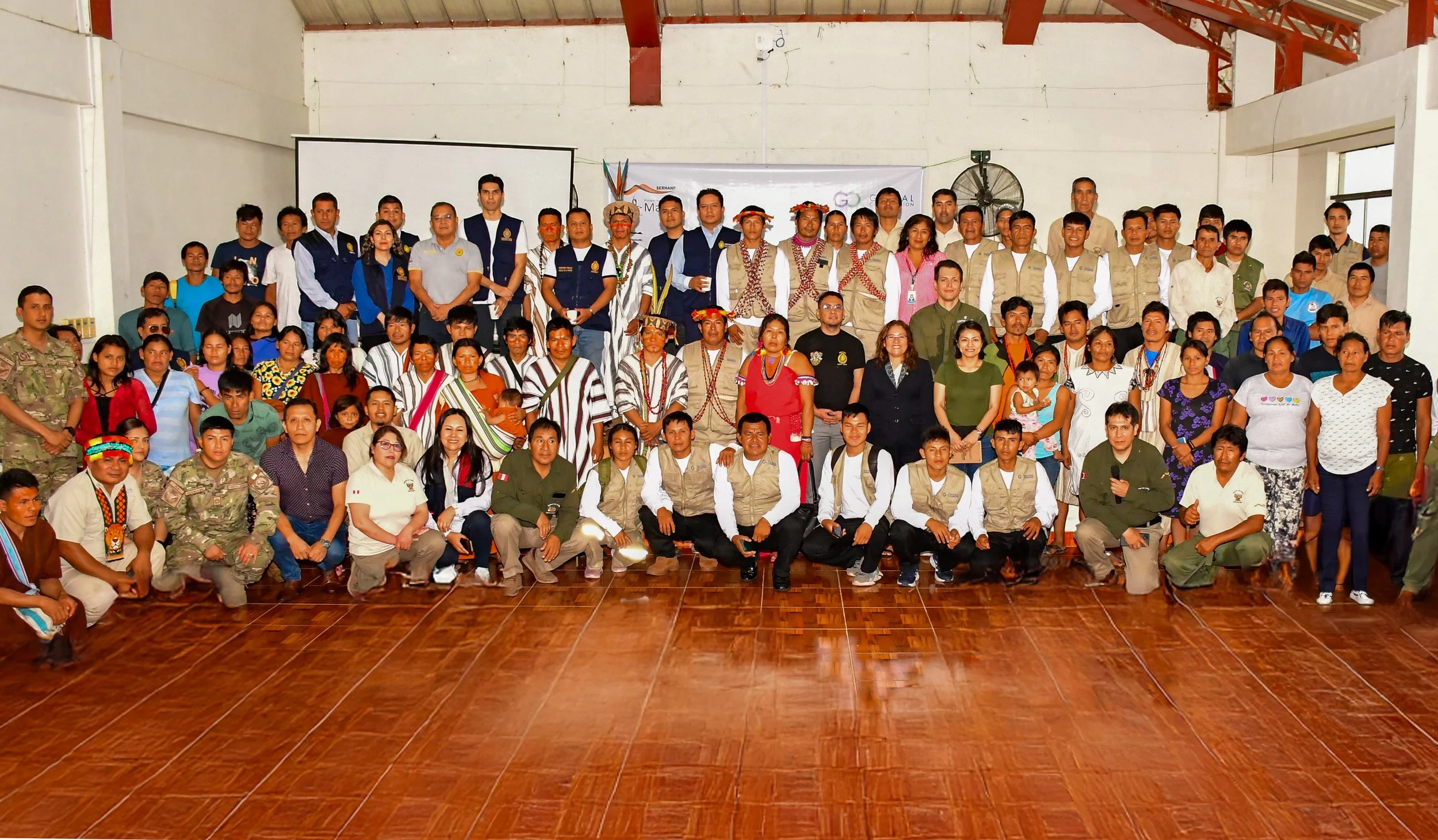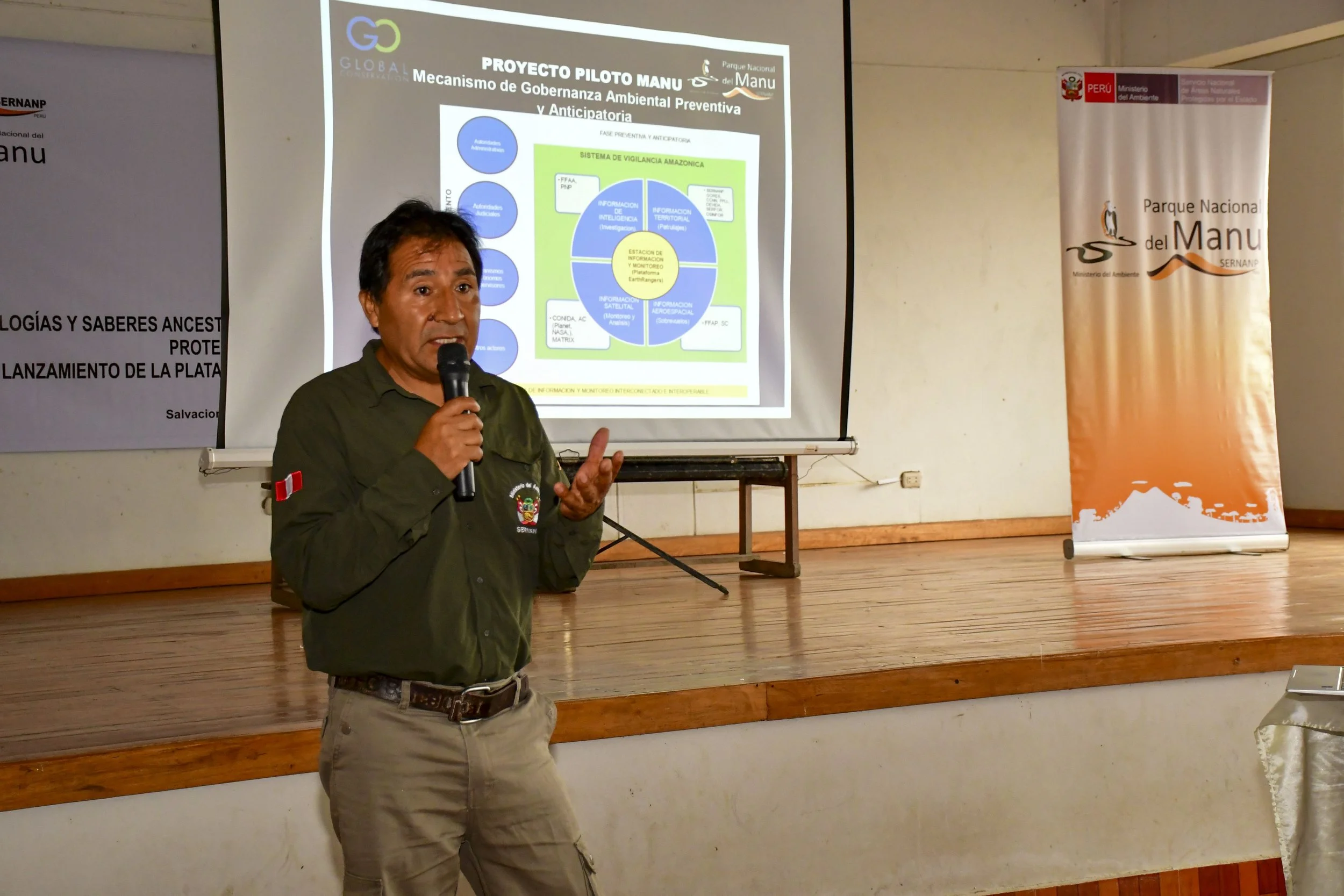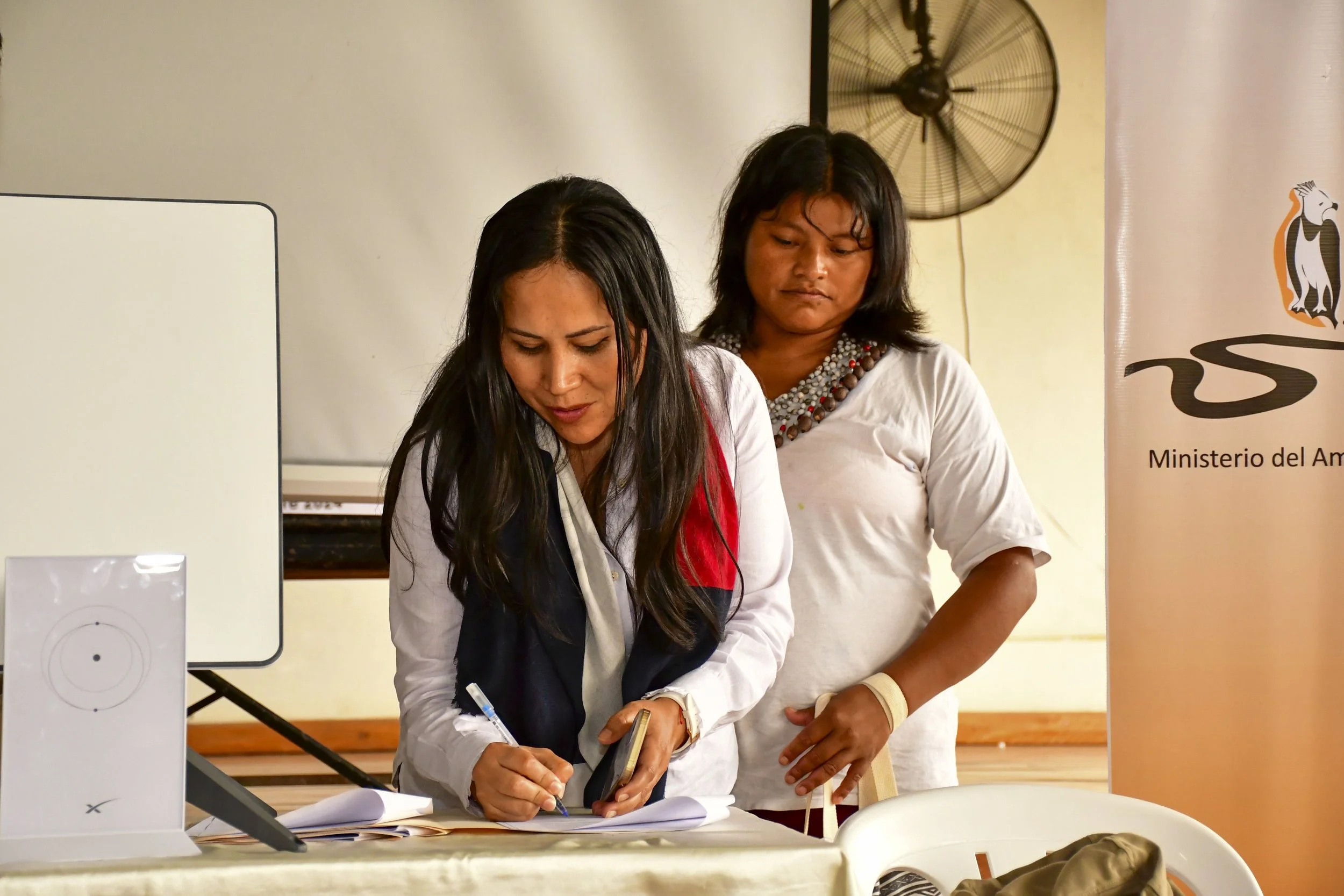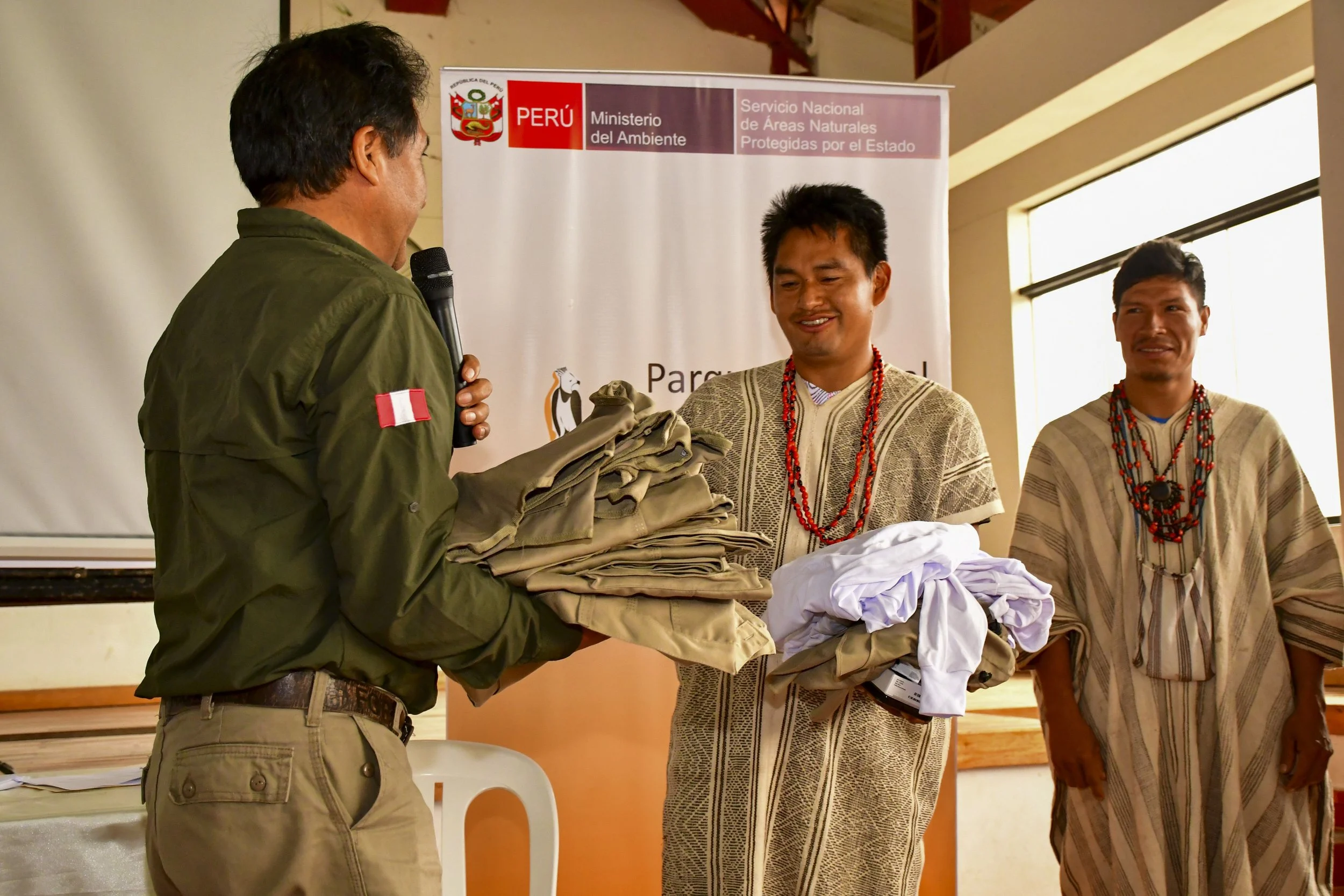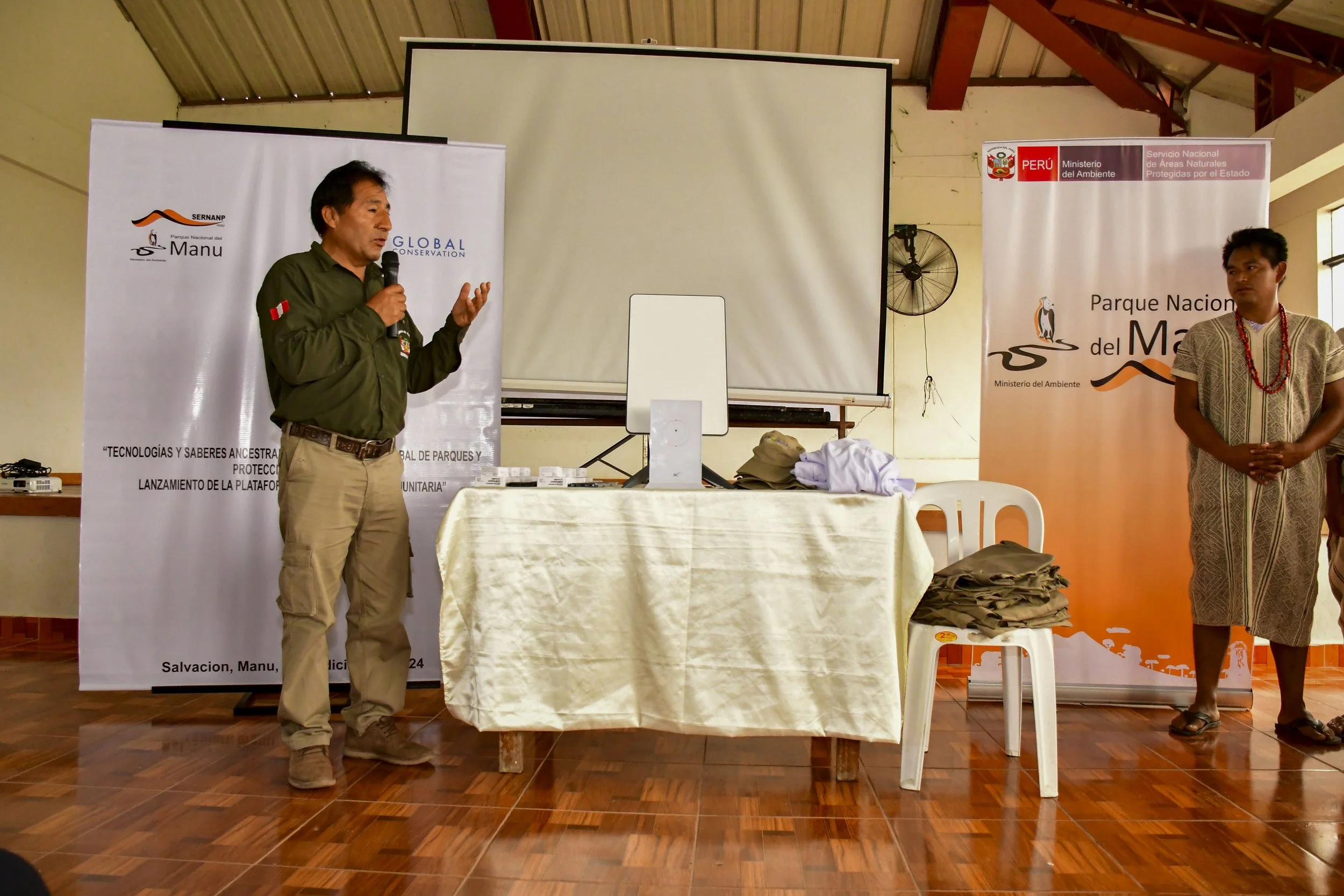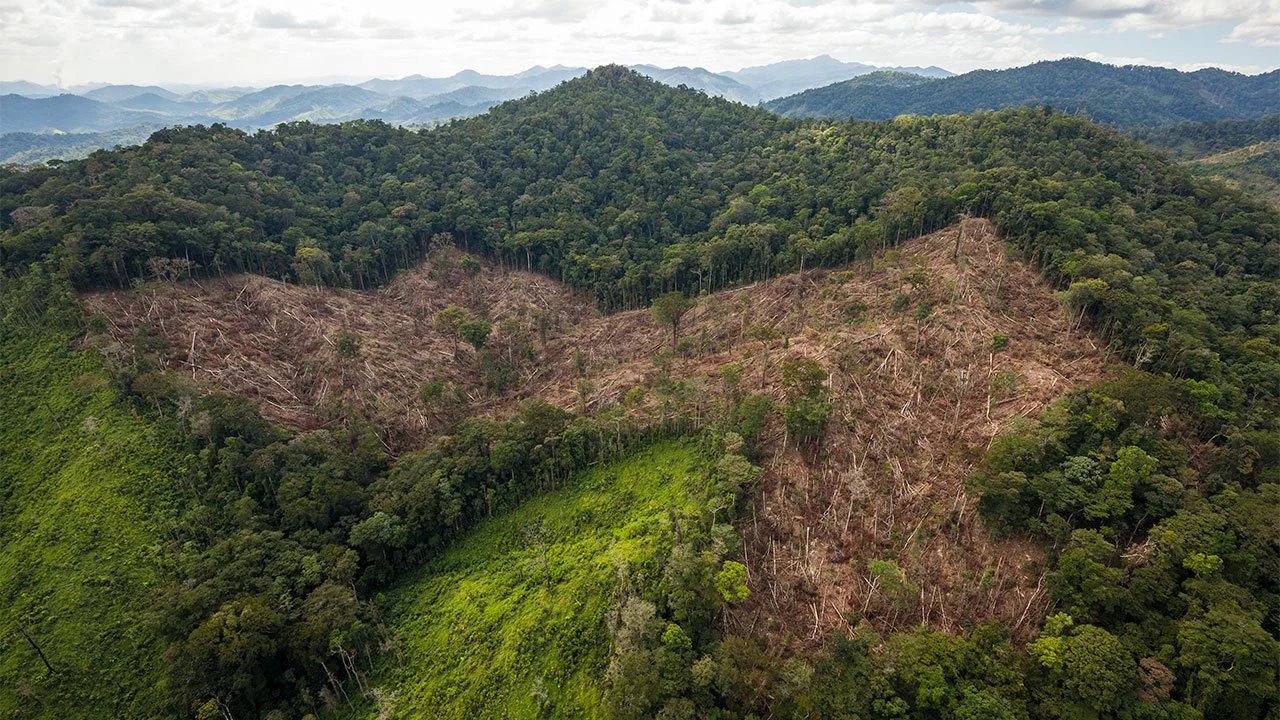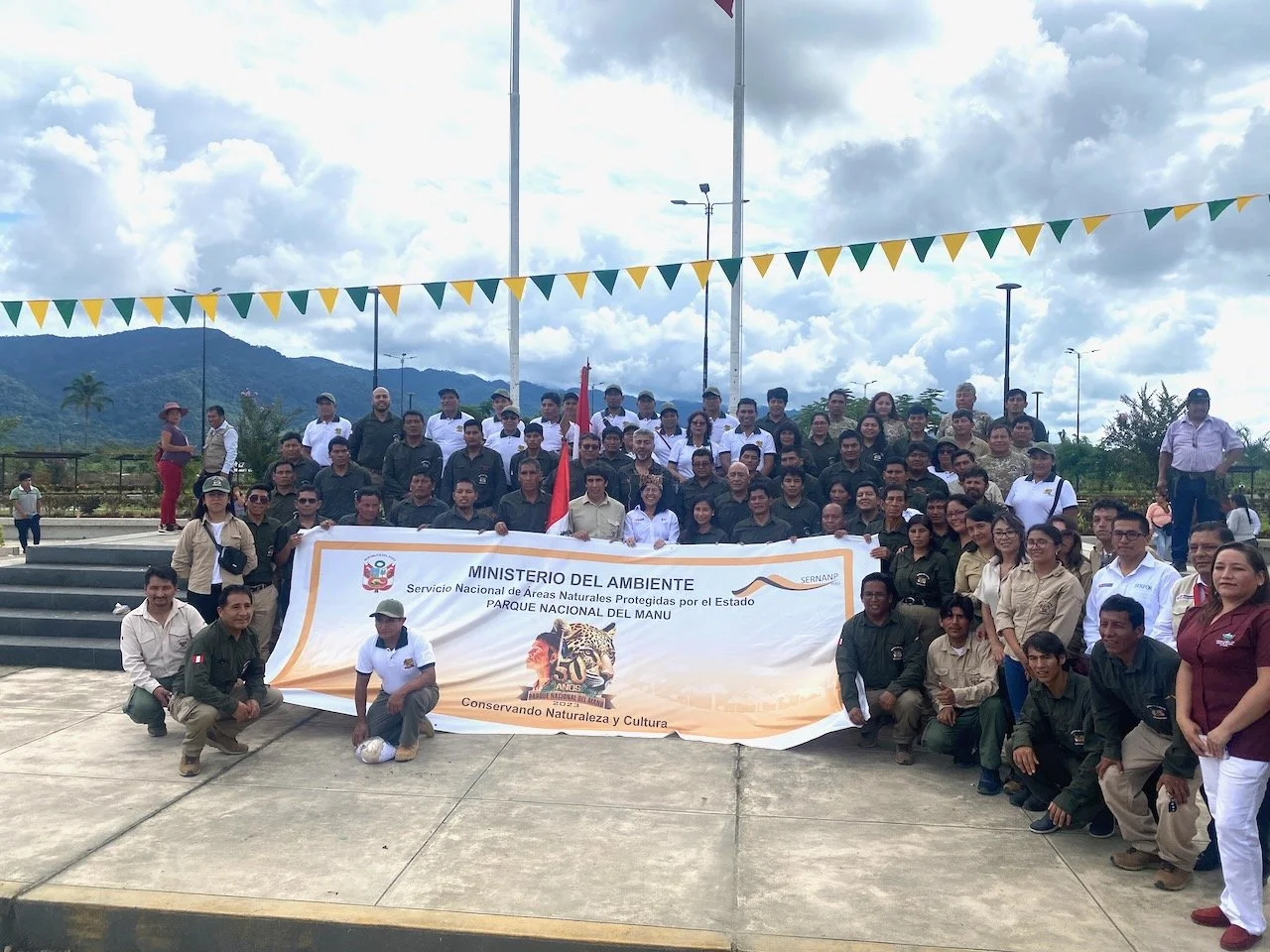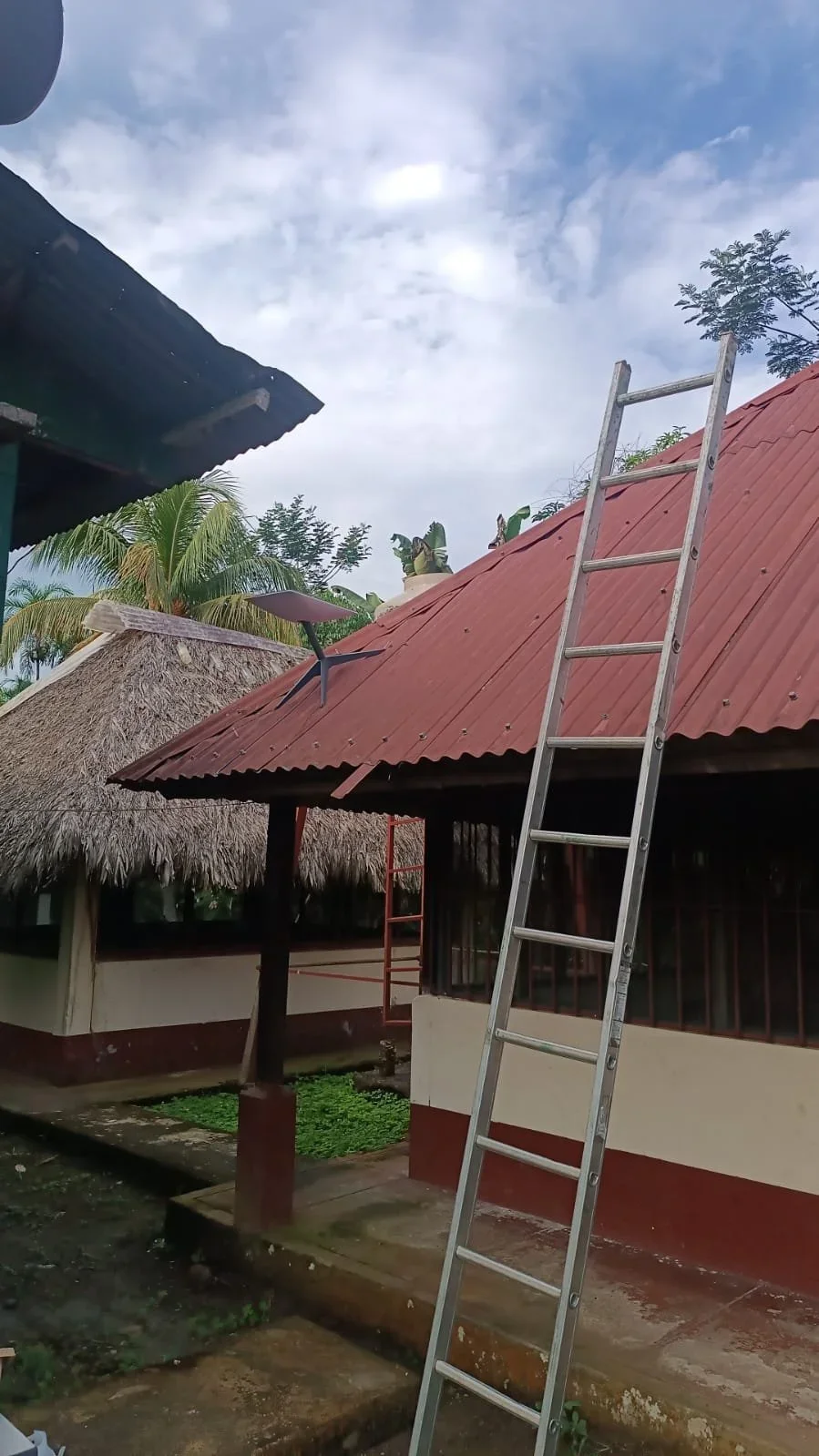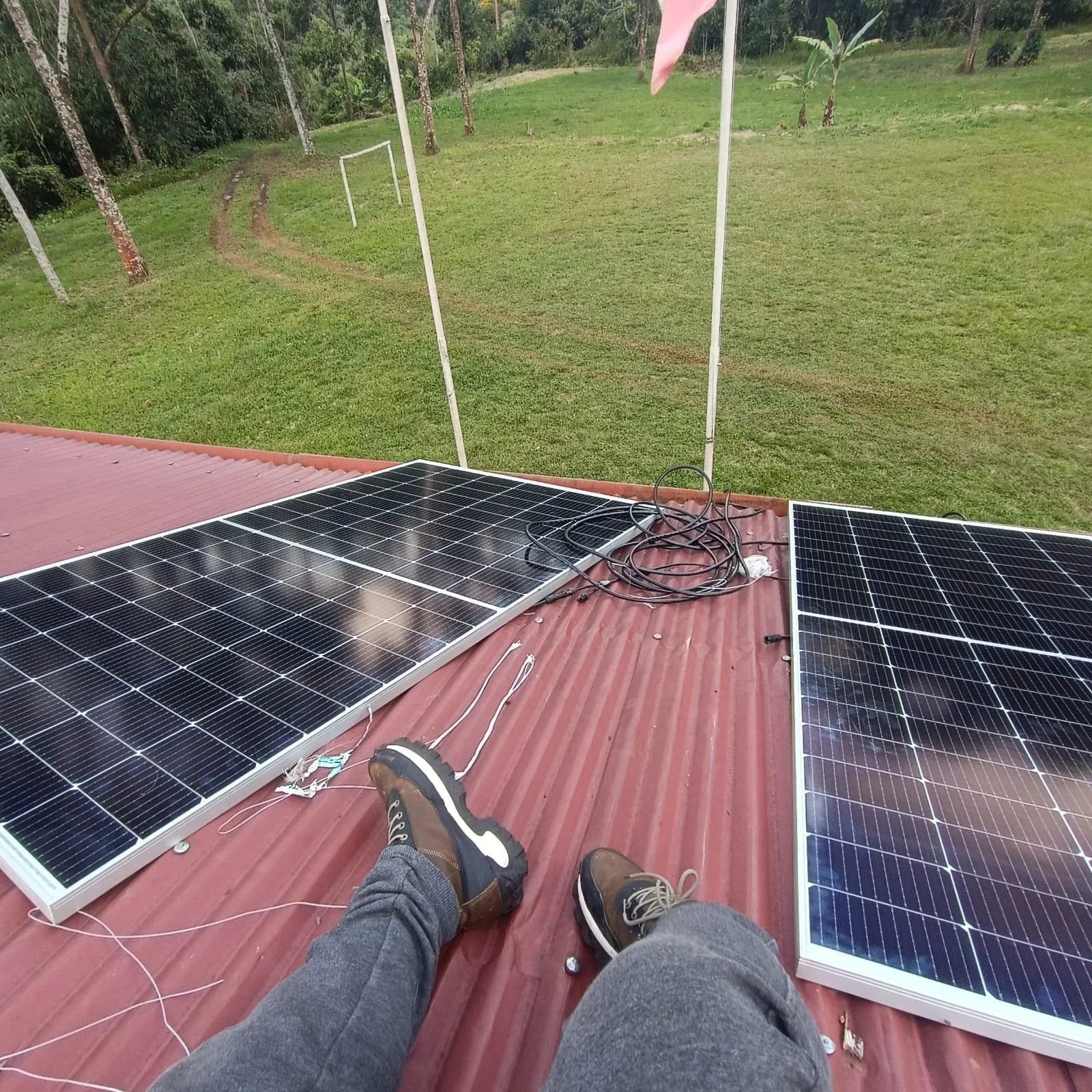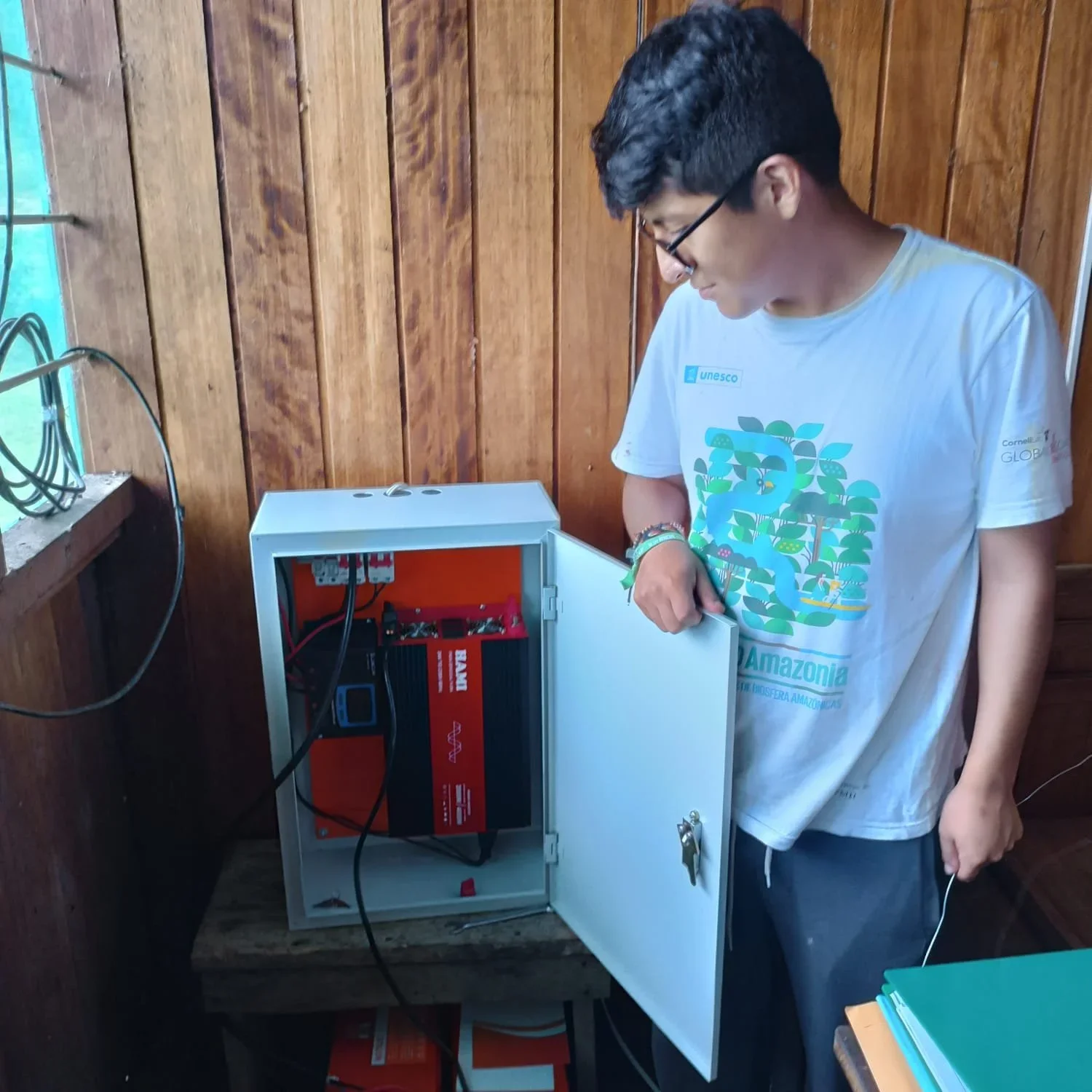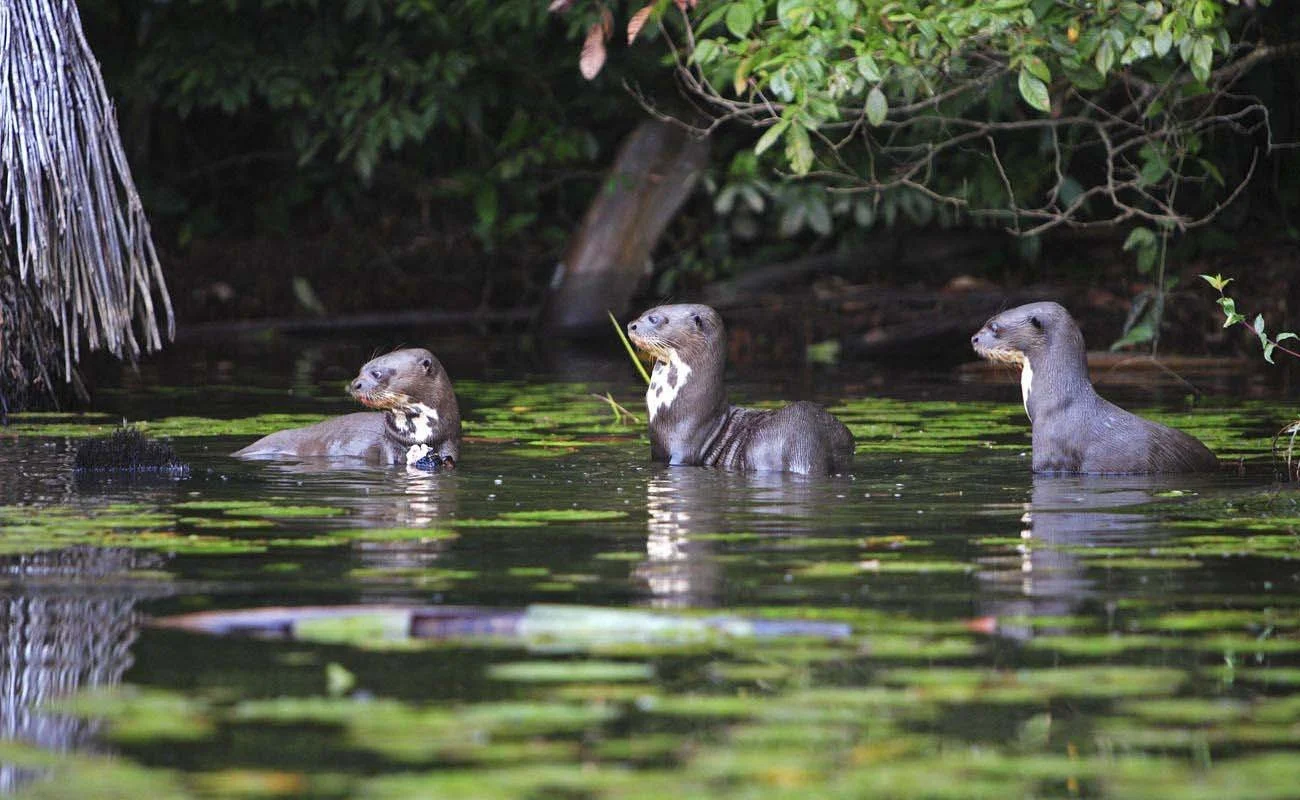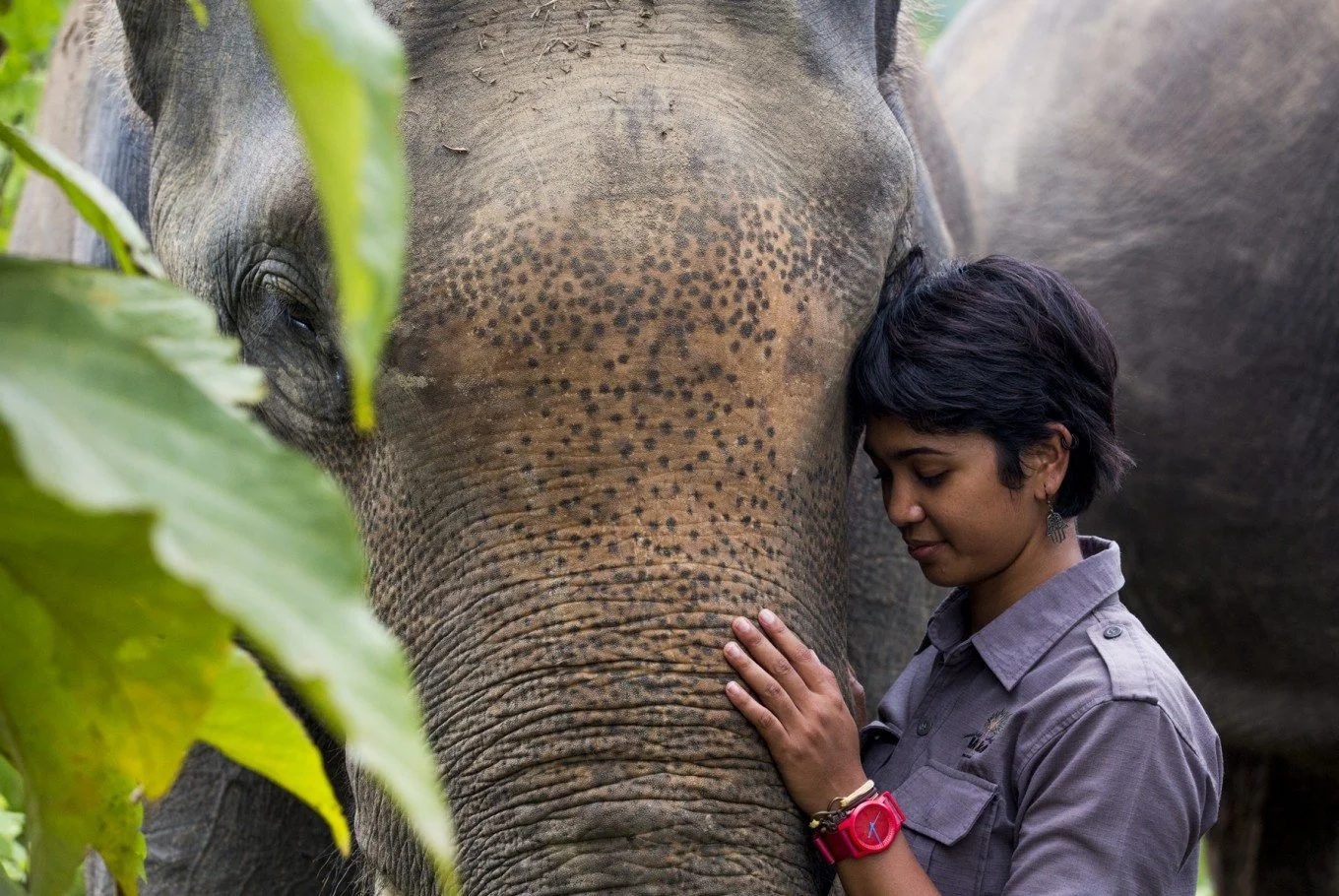Peru Community Protection—2024-25 Impact Report
Following The Success of Eradicating the Shining Path from Indigenous Territories in Peru, Global Conservation Supports the Asháninka People in Protecting Their Communal Reserves
Focused on protecting 400,000 hectares of communal reserve forests around Otishi National Park in Peru, Global Conservation helps the Asháninka People deploy Global Park Defense and Community Protection to protect against the violent conflict from invaders and illegal loggers clearing the forests for illicit crops and for the installation of illegal infrastructure (clandestine airstrips).
The Director General of SERNANP Peru asked Global Conservation to collaborate with Otishi National Park to strengthen the surveillance of the Park and the Ashaninka and Matsiguenga Communal Reserves, and the Joint Command of the Armed Forces (VRAEM Special Command) can provide security in the Park's Buffer Zone to the Asháninka Community Ecoguards, who patrol large areas to stop invaders, illegal loggers, and illicit coca producers in their indigenous territories.
GC's Ashaninka Community Protection program, in partnership with ECO Asháninka, uses advanced communications using satellite and surveillance technologies, combined with ancestral knowledge, to strengthen the management of their communal territories.
Otishi National Park was established relatively recently in 2003, in the high jungle areas of the Vilcabamba Range. Otishi protects the deep, rich river basins of the Ene, Tambo, and Urubamba rivers, with 99% of its surface still in an almost intact natural state due to its steep mountain geology and impenetrable forests.
Unfortunately, the surrounding Communal Reserves of the Asháninka Peoples are in the river basins and are being cut or fragmented with heavy clearing for agriculture and coca cultivation, with multiple clandestine airstrips. For over a century, there has been encroachment onto Asháninka land by loggers, Maoist guerrillas, drug traffickers, colonists from other regions, and oil companies.
The stated aim of Otishi National Park is to protect the outstanding natural beauty of the area and the cultural integrity of its two indigenous peoples: the Asháninka and the Machiguenga.
The Asháninka are the largest indigenous group in Peru's Amazon and inhabit a large area adjacent to Otishi National Park. The Asháninka Communal Reserve is recognized as a protected area category in Peru, where its indigenous and other communities should benefit and share responsibility for protection and management.
Global Conservation—Critical Support at a Critical Time
GC led the creation of the Asháninka Protection Force for Otishi National Park and the Asháninka Communal Reserves, combined with continual close support from National Park Rangers and the Peruvian Armed Forces.
Deploying Global Park Defense in close cooperation across the Asháninka Indigenous communities, SERNAP, the Peruvian Air Force, and the VRAEM's Joint Command of the Armed Forces enables critical expansion of protection across over 400 kilometers and 400,000 hectares focused on two primary areas with 10 indigenous communities.
This integrated model, which Global Conservation Peru first created over the course of five years in Sierra del Divisor National Park, is currently being scaled to include the combined 5 million hectares of both Otishi and the adjacent Manu National Park and their Indigenous Territories.
Setting a new model for Peru's National Parks to work closely with Indigenous communities and a multi-agency, all-governmental approach, Global Conservation is integrating and amplifying combined resources in partnership with local communities to stop environmental damage to their ancestral lands.
Peru has a proud history of establishing National Parks and Indigenous Territories protected under the Constitution. We now need to work harder together in order to protect them.
GC funds a drone for deployment to watch over their lands.
5-year Implementation of Global Park Advocacy and Community Protection
1. Satellite and Aerial Forest Monitoring
2. Equipped and Trained 30+ Community Ecoguards from 10 Communities
3. Hired an Enforcement Manager
4. Supported SMART and EarthRanger Patrol Operations for 10,000+ kilometers
5. Coordinated Arrests and Relocations of illegal land invaders with National Park Authorities (SERNNP) and Law Enforcement.
6. Intensive patrolling by foot, truck, and boat in two highly endangered Communal Reserve sectors.
Equipping the Asháninka
Community Ecoguards have been equipped and trained to patrol with drones and GPS to identify threats in their Communal Reserve and respond with an integrated force of National Park Rangers, law enforcement, and military support.
GC deployed GPD, patrolling over 1,000 kilometers and covering 400,000 hectares, focused on two primary high-threat areas in cooperation with ten indigenous communities.
By responding rapidly to threats, illegal settlements and coca growers are discouraged from entering and destroying communal forests and the associated killing of wildlife to feed their crews. By increasing the fear of interdiction and arrest, we have greatly discouraged illegal activities, especially against critical access routes.
Learning to use SMART technology and GC Community Earth Ranger.
Satellite imaging records and tracks the history of locations where Eco Gaurds go and when they find problem areas.
Mapping Deforestation for Rapid Response
Using satellites to identify deforestation in the National Park and surrounding Communal Reserves, which are supported by high-resolution aerial overflights to clearly identify specific areas for targeted combined interdictions, enables the Park Authority to prioritize scarce resources by deciding where and when to patrol, when to secure backup from law enforcement, and where to better locate ranger stations to stop deforestation and illegal activities.
By responding rapidly to threats, illegal settlements, and coca growers are discouraged from entering and destroying National Park forests and associated killing of wildlife to feed their crews. By increasing the fear of interdiction and arrest, we greatly discourage illegal activities within the National Park and via critical access routes.
Due to rapidly changing weather and extensive cloud cover in the Amazon, getting clear photography and sensor information can be quite tricky. In order to have concise information for on-the-ground patrols, we use a combination of four critical layers:
Satellite
Airplane
Drone
Intelligence
GC Community Protection Shines in Peru - Machiguenga People are Guardians of Manu National Park and Communal Reserves
Residents of three communities will be trained as eco-guards and trained to monitor their forests using technology and, consequently, the protected natural area.
Global Conservation has deployed Global Park Defense to protect the borders of Manu National Park, spanning over 1,700,000 hectares from the Andes to the Amazon.
The protection of Manu National Park is one of the highest priorities of Peru. The new highway from Salvacion to Boca Manu has already been built, and the existing highway to Cuzco has been greatly improved. A planned highway connecting Boca Manu to the "wild west" mining city of Puerto Colorado threatens to open Manu National Park to massive, rapid development and potential destruction of forests and wildlife in border areas.
Now is the time to protect Manu National Park by deploying Global Park Defense—systems, equipment, and training—to increase the effectiveness of patrolling and law enforcement and remove illegal activities from in and around the National Park.
We have built new cooperation between the Indigenous Communities surrounding the national parks with the National Parks Authority (SERNANP), law enforcement, and the military when needed to better protect their Indigenous Territories, especially against coca cultivation.
The Machiguenga are an indigenous people who live in Manu National Park and the adjoining areas. Their main crops grown are manioc, maize, and bananas, but today commercial crops such as coffee and cacao are increasingly important. Their main source of protein used to be peccaries and monkeys, but today fish have become more important as game animals have become increasingly scarce as a consequence of the encroachment of highland immigrants into the area.
In 2002, part of their ancestral territory was recognized as a natural protected area called the Amarakaeri Communal Reserve. Since 2006, the reserve has been co-managed by ten Indigenous communities and the National Service of Protected Areas (SERNANP), with the support of two Indigenous organizations (FENAMAD and COHARYIMA).
Supported by satellite and aerial monitoring, deforestation events are rapidly responded to before they become out of control. Invasions can occur swiftly, especially in nearby Indigenous Territories and community areas, where there is no National Park designation to provide protection, no budget for protection, and no formalized law enforcement collaboration.
Global Park Defense integrates local communities into park and wildlife protection and increases collaboration with law enforcement to rapidly remove illegal invaders and illicit crops being grown on their lands before things get out of control.
This part of the forest was felled to make way for coca farming.
In the past ten years, previously untouched areas have been assaulted by a combination of coca cultivation, agricultural expansion, cattle ranching, and now urban expansion.
By setting up strong and effective defenses through coordinated patrolling involving multiple sectors – Communities, National Parks, Military, and Law Enforcement – we help National Parks protect their forests and wildlife. The primary goal of Community Protection is to work with SERNANP and Global Conservation to deploy Global Park Defense in their territories for forest monitoring and initiate rapid response efforts to deforestation from coca cultivation and illegal logging while in close coordination with law enforcement and the military when needed.
Another vital goal is to increase on-the-ground patrolling in the entire area from Patria/Tono and Boca Manu/Linona in order to increase Community Protection from nearly ground zero to over 10,000 kilometers of patrolling a year in the next two years.
Up until the more recent introduction of a genetically altered coca plant that thrives in the Amazon's lowlands, the coca plant used to make cocaine was only grown in isolated locations at high elevations. This has caused a catastrophe, clearing hundreds of thousands of hectares of intact tropical Amazon forests. Now, even the farthest reaches of the Amazon in National Parks and Indigenous Reserves are facing land clearing for coca cultivation, and local communities and park rangers are in serious danger.
The eco-guard training program involves training in the use of the EarthRanger system, which collects real-time information on deforestation, crops, and the presence of animals or people within protected natural areas.
Deploying Global Park Defense (GPD) in partnership with the Machiguenga Indigenous Communities, SERNANP, and law enforcement will deliver a critical expansion of protection across nearly 200 kilometers and 120,000 hectares.
Never before have Peru's National Parks worked so closely with all key governmental organizations and their combined resources in partnership with local communities to stop the environmental damage of its National Parks. Due to Peru's long history of establishing National Parks and Indigenous Territories, we now need to work harder together in order to protect them.
Integrated Protection for National Parks and Indigenous Territories
Satellite and Aerial Monitoring
Park-wide Communications
Rapid Response Teams
Border Demarcation
Biodiversity Recovery
Mapping Deforestation for Rapid Response
Using satellites to identify deforestation in the National Park and surrounding Communal Reserves, which are supported by high-resolution aerial overflights to clearly identify specific areas for targeted combined interdictions, enables the Park Authority to prioritize scarce resources by deciding where and when to patrol, when to secure backup from law enforcement, and where to better locate ranger stations to stop deforestation and illegal activities.
By responding rapidly to threats, illegal settlements, and coca growers are discouraged from entering and destroying National Park forests and associated killing of wildlife to feed their crews. By increasing the fear of interdiction and arrest, we greatly discourage illegal activities within the National Park and via critical access routes.
Giant river otters are an endangered species and part of the vast ecosystem under the protection of Global Conservation. Safeguarding forest and estuary ecosystems is vital for the recovery of this species.
Biodiversity Recovery is just as important as Forest Protection as the populations of most species have declined to dangerous levels due to commercial poaching and hunting.
Global Conservation supports the development of a 30-person Manu Community Protection Force deploying Global Park Defense over the next 2 years with the primary goals:
Equip and train 30 Community Ecoguards from 10 Communities
Hire an Enforcement Manager living in the Region
Logistics for 10,000+ kilometers of Patrolling per year
Deployment of the SMART System and the EarthRanger System for Protection and Biodiversity
Coordination of detentions and relocations with the park authorities and competent authorities (Prosecutor's Offices)
Satellite and Aerial Forest Monitoring
Coordination with SERNANP and Law Enforcement







